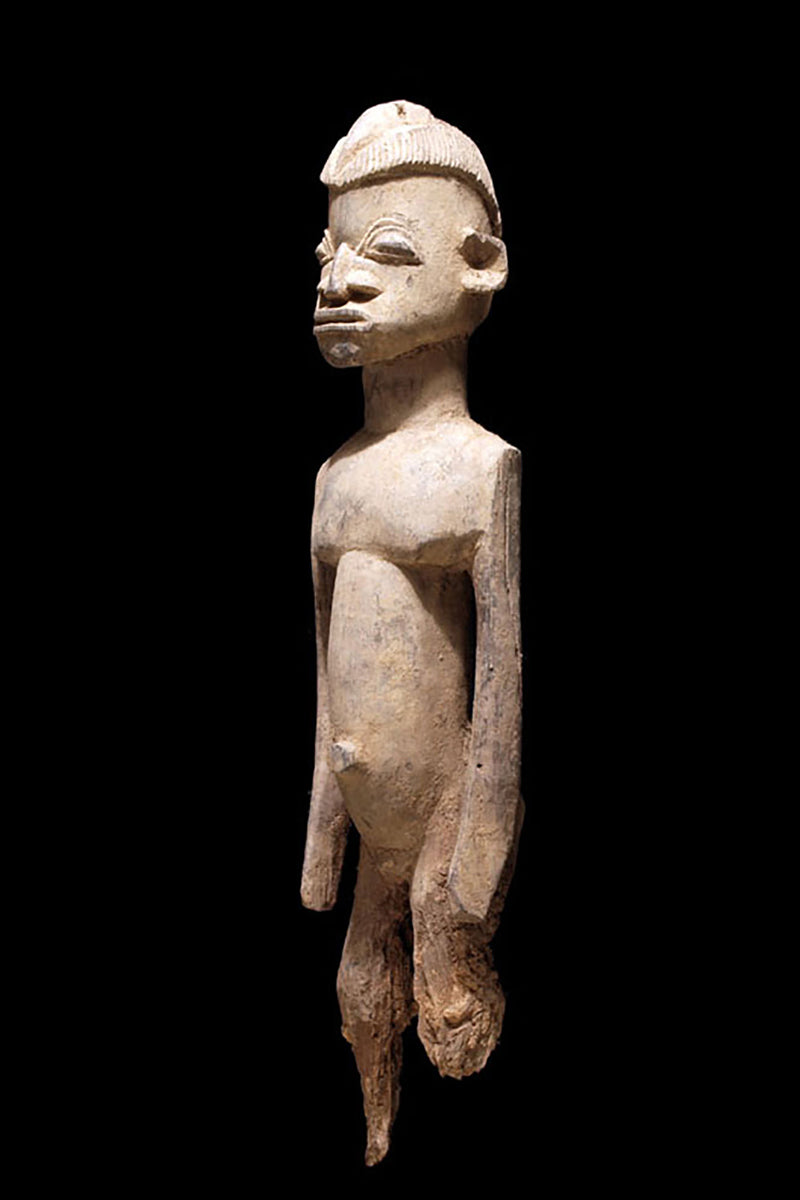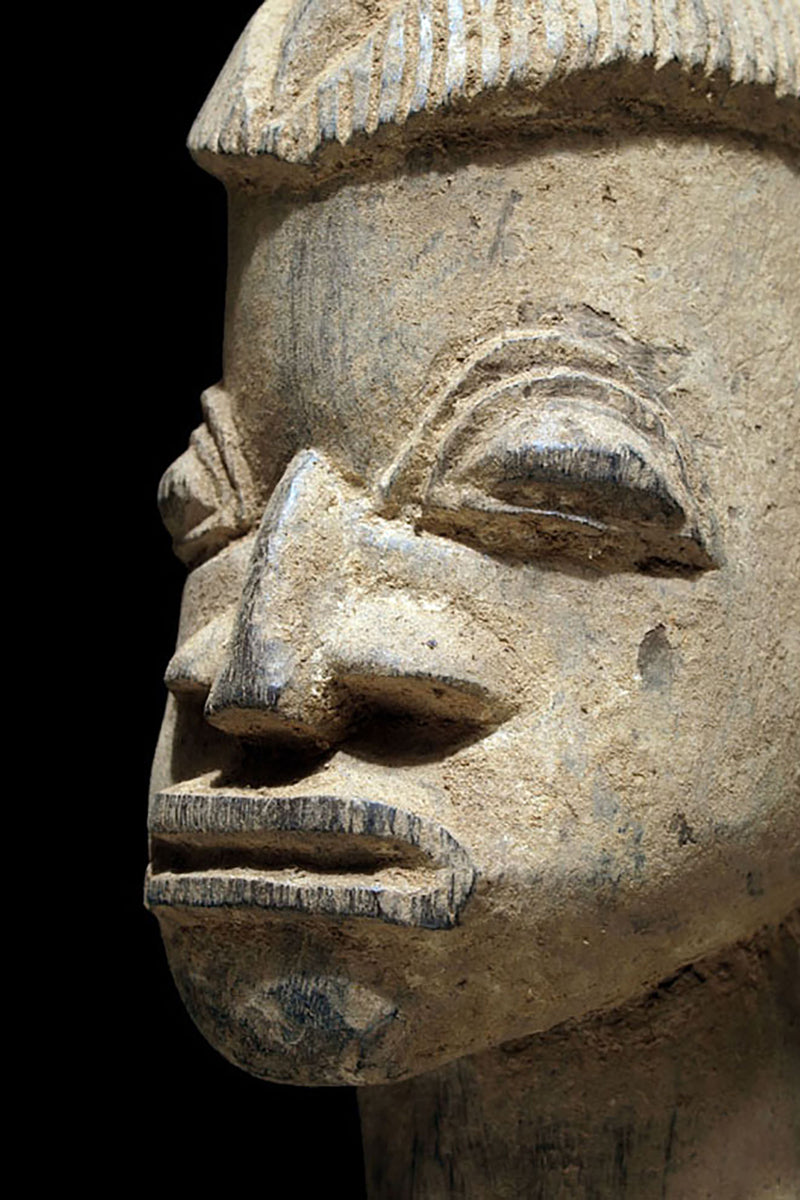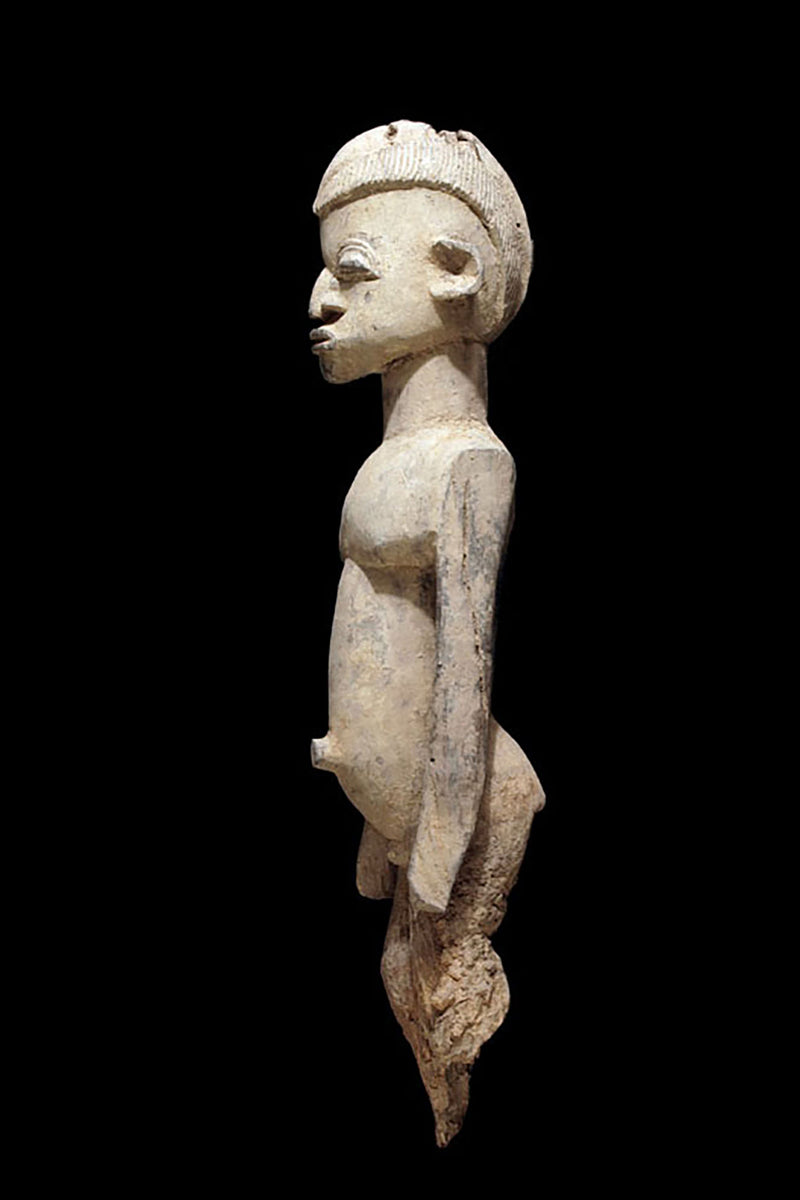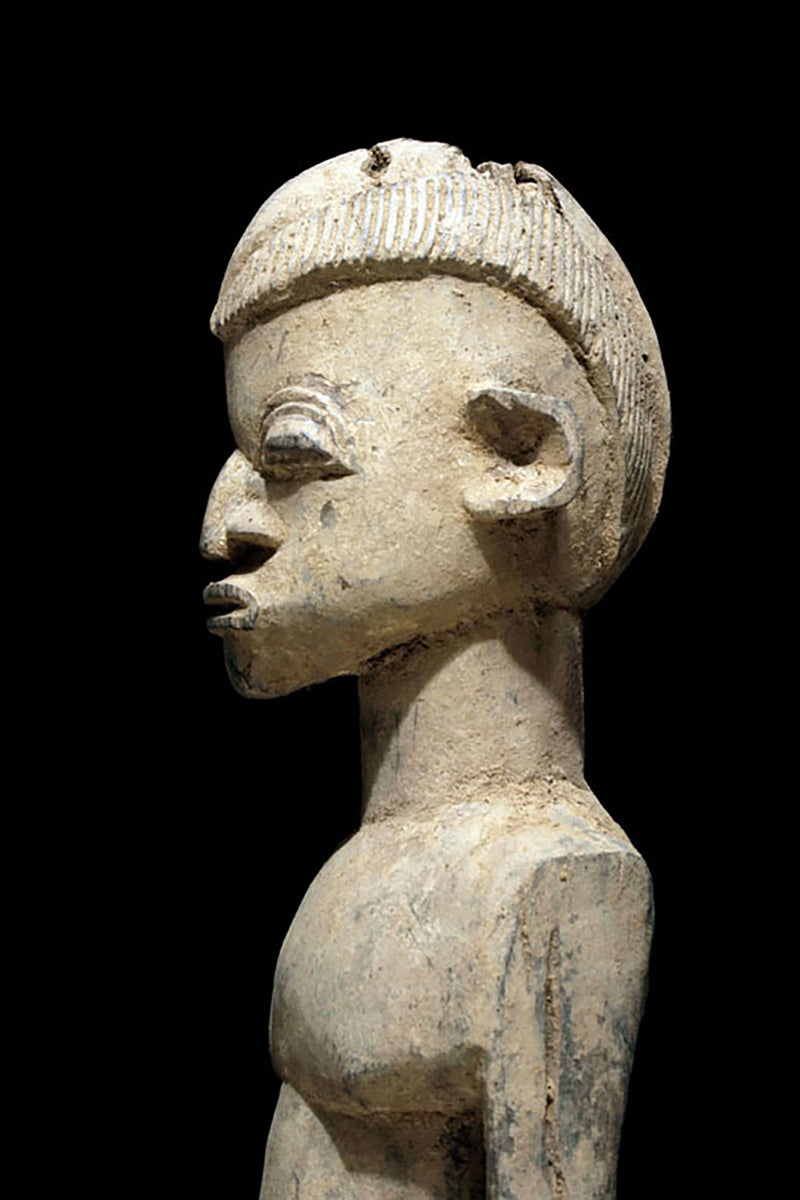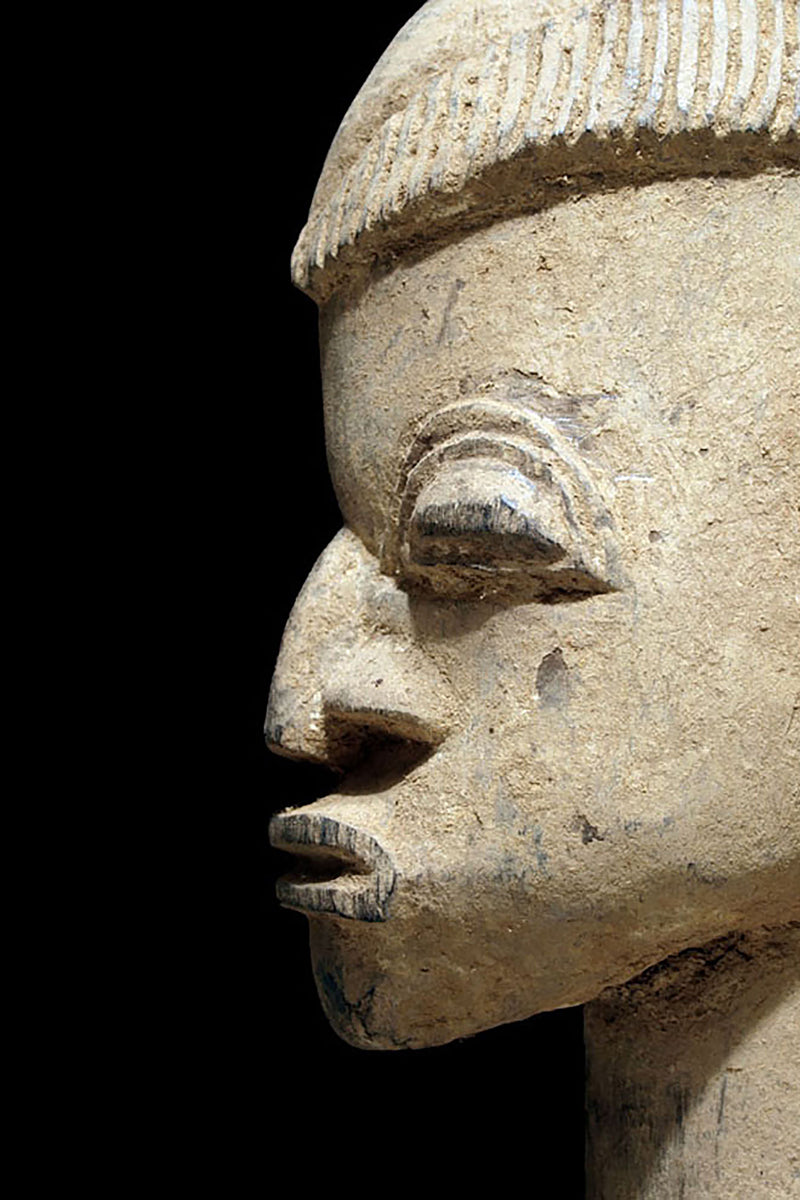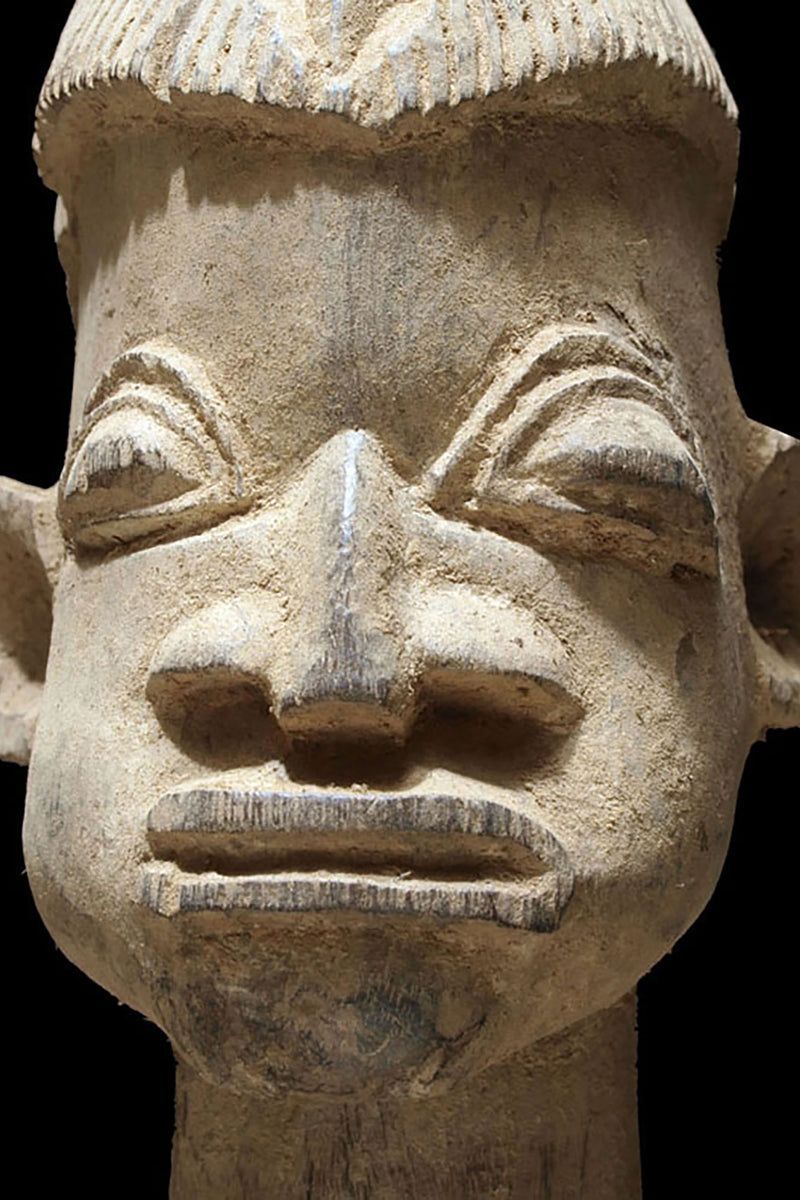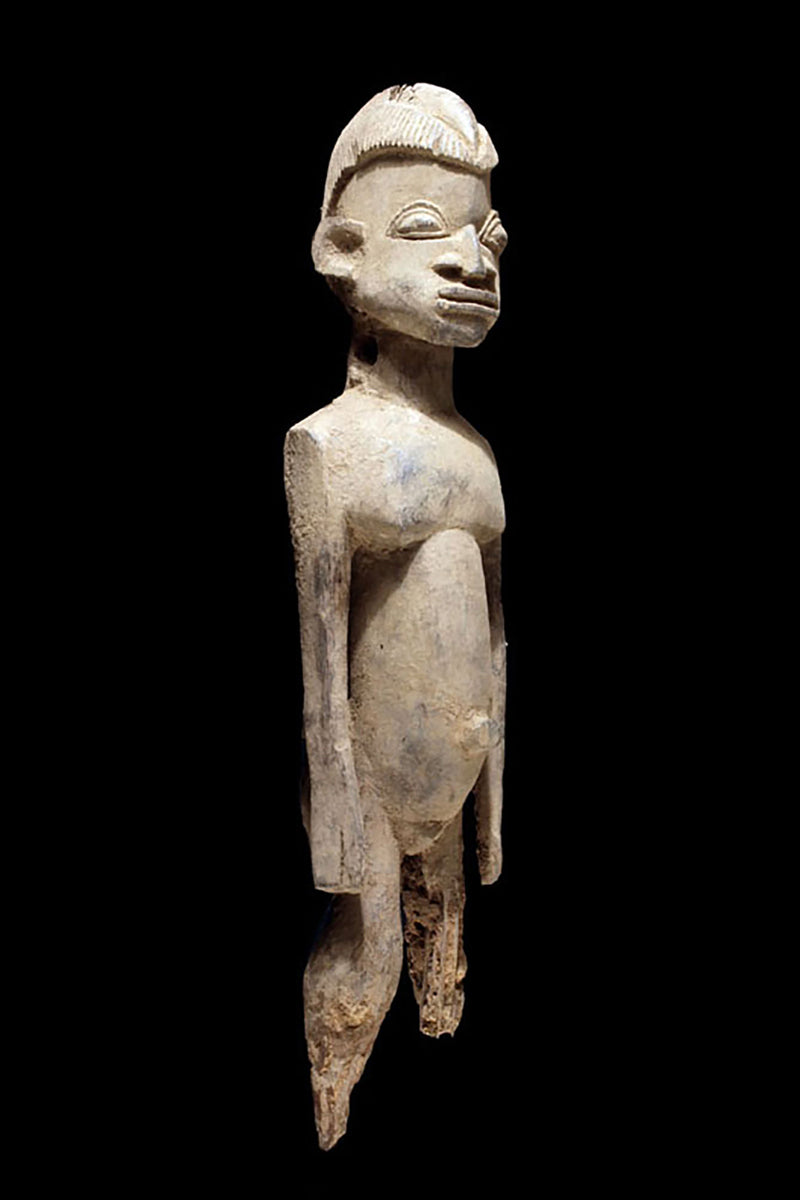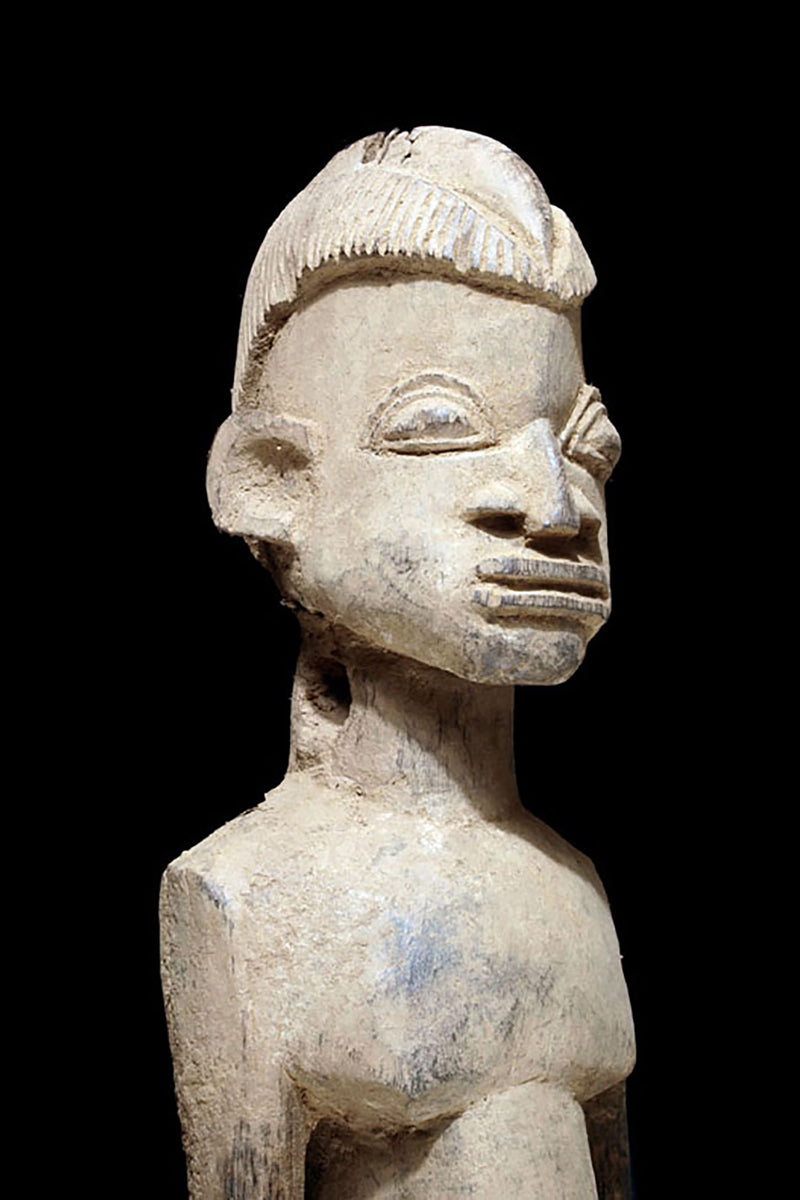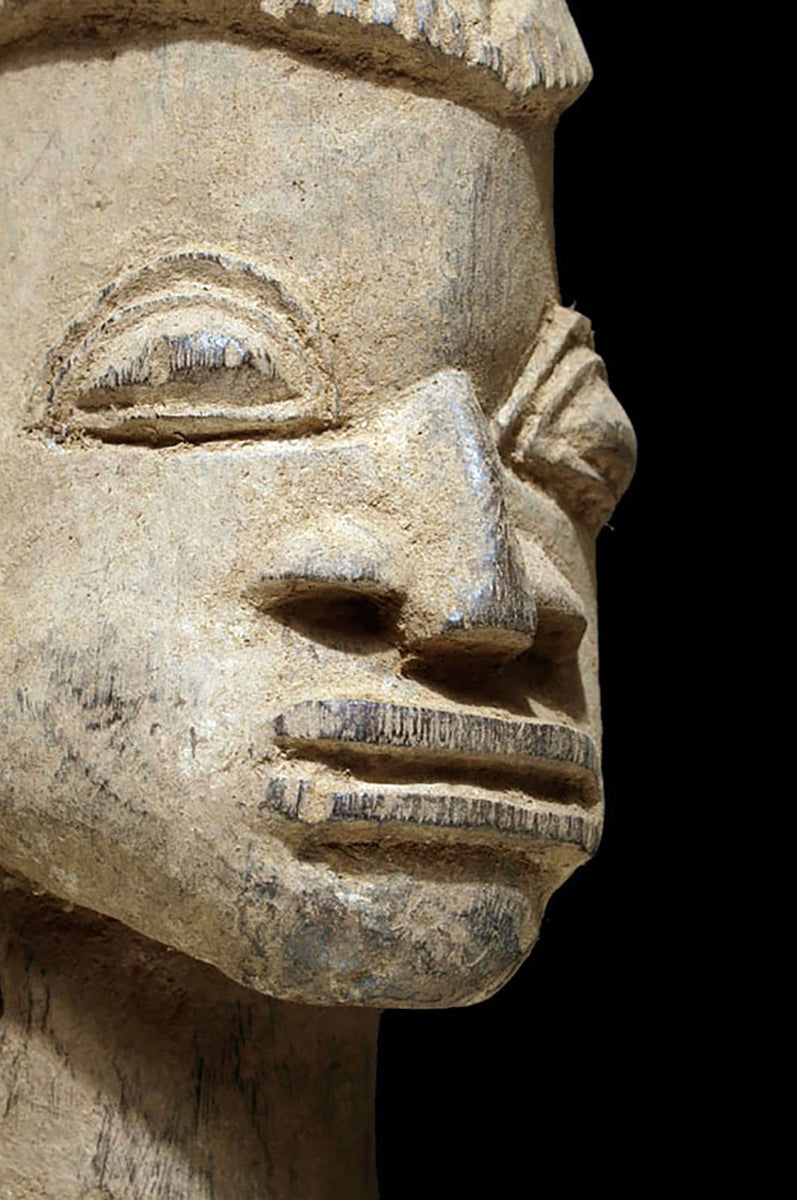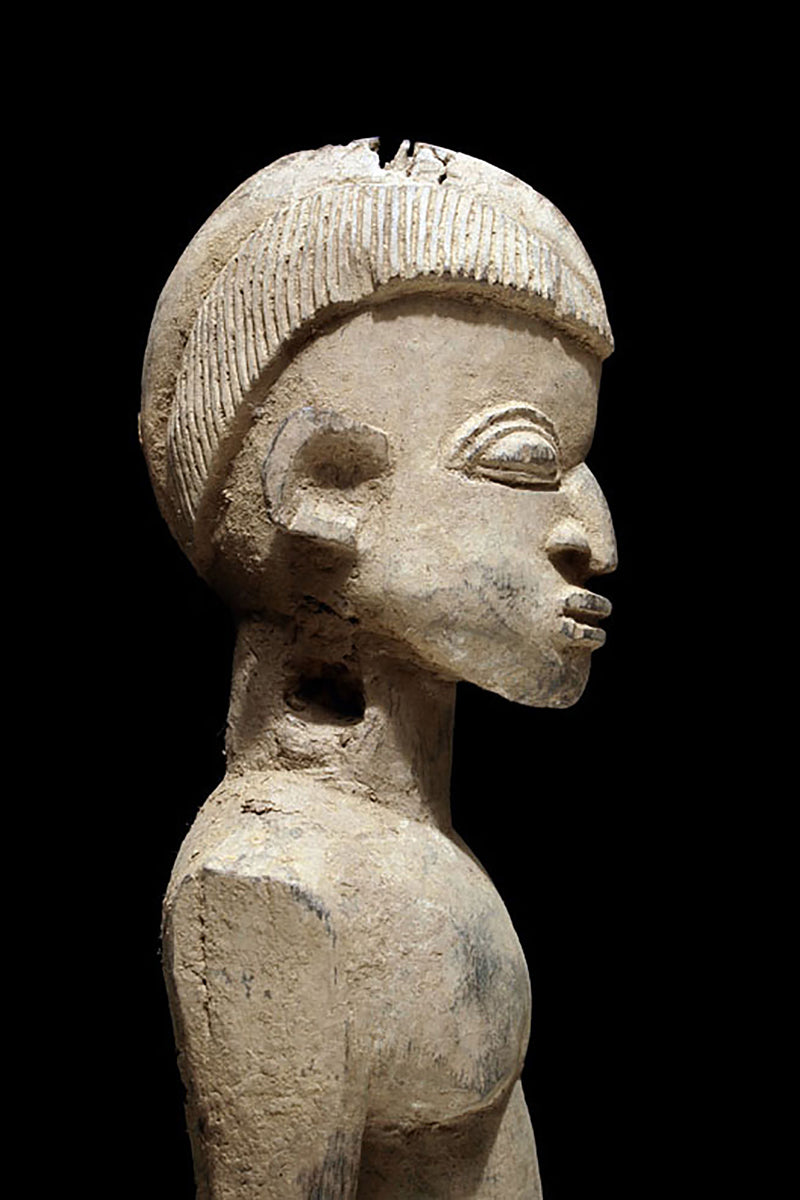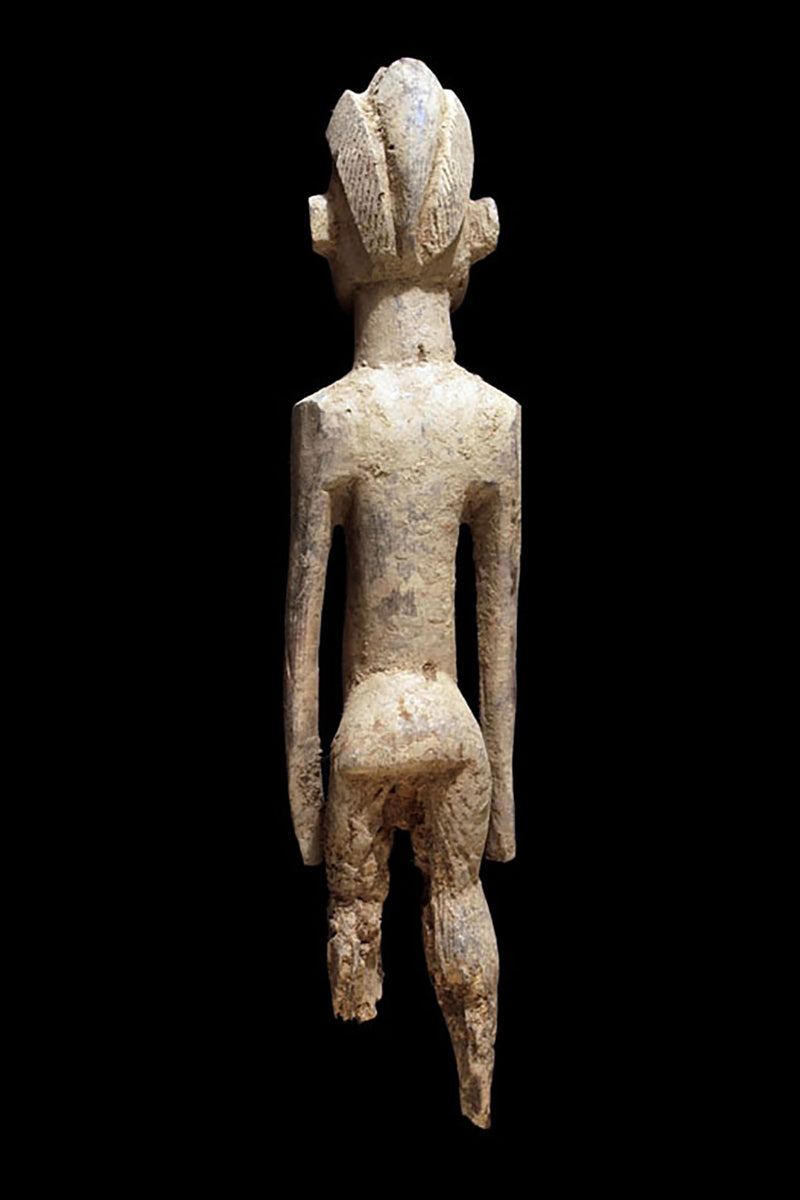Galerie Wolfgang Jaenicke
A fragmentary male sculpture
A fragmentary male sculpture
Couldn't load pickup availability
A fragmentary male sculpture of circumstances of Sikire Kambire or from the artist himself, the legs eroded by insect damages, the slender torso with a pointed navel, the arms close to the body with fin-like hands, a short thick neck supporting an oval haed, with bulging, crescent eyes, a broard slit mouth beneath a nose with prominent nostrils, framed by u-shaped ears, the threeparted coiffure caplike and striated; heavy, hard sankolo wood, aged patina.
Ritual Bateba, not made for the colonial and tourist art market are more rare in Sikire Kambires work as a sculptor or the workshop around him especially after 1930.
Comparable with the oevre of well known sculptors like Bimtiote Dah we collected works of high quality, sometimes better than many works of the quoted artists, but - dissenting to our first opinion - we aren't able to identify these works 100 percent with the oevre of these well known artists. One reason is the difficulty that we have only a very small number of works, we can subsum with sureness to these artists and this question will be open until we have found more works from these artist or the workshops around them.
The enclosed sculpture was identifyed by Paul Howlett as a work of Sikire Kambire but according of Thomas Keller it´s neither a work of Lunkena nor a work of Sikire. My first impression of this work were doubts, although Oumaro Bardo, Gaoua, the owner, from whome I have purchased the sculpture, was sure that this work has to be subsumed to Sikire Kambire and also the arguments of Paul Howlett convinced me at that time.
Similar like the quoted sculpture of Bimtiote Dah the last point of discussion should be quoted and not published opinions of the past, although I don't correct my former points of view or the opinions of other specialists for Lobi sculptures. A serious discussion is also a historical process and should be conserved in its timeline.
Sikire Kambire is a distinguished Lobi carver from Burkina Faso, known for his mastery in the traditional woodcarving practices of the Lobi people. The Lobi are an ethnic group inhabiting southwestern Burkina Faso and adjacent regions, renowned for their spiritual and symbolic wooden sculptures. These sculptures often serve protective and ritual functions within Lobi communities, embodying ancestral spirits and moral values.
Kambire’s carvings are characterized by their abstract and geometric human forms, typical of Lobi aesthetic principles, which emphasize spiritual representation over naturalistic detail. His work demonstrates meticulous craftsmanship, with a refined use of wood texture and patina, blending tradition with a subtle individual artistic voice. His sculptures not only maintain the cultural heritage of the Lobi but also appeal to contemporary collectors and art audiences worldwide.
His workshop plays a critical role in preserving and transmitting Lobi carving traditions. It functions as a cultural center where apprentices learn both the technical skills and the spiritual significance of the carvings. This apprenticeship model ensures that the intangible knowledge of the Lobi’s animistic worldview and artistic practice continues to thrive. According to Wolfgang Jaenicke’s blogs on Tribartforum, Kambire’s workshop is more than a production site; it is a living institution that nurtures cultural continuity and resists purely commercial exploitation.
In a globalized art market, Sikire Kambire carefully balances the demands of international collectors with the need to maintain cultural integrity. He selects commissions that respect the spiritual meanings behind his works and educates buyers on their deeper significance. This approach, as highlighted by Jaenicke, helps foster a respectful appreciation of Lobi art beyond mere aesthetic or exotic value.
Overall, Sikire Kambire exemplifies the dynamic resilience of traditional African art in the modern era. His carvings and his workshop ensure that the Lobi’s rich spiritual and artistic heritage remains vibrant and relevant today.
1 MacGaffey, Wyatt. The Art of the Lobi. University of California Press, 2000, pp. 12-15.
2 Devisch, René. "Spirits and Statues: The Lobi and Their Shrines." African Arts, vol. 25, no. 3, 1992, pp. 38–47.
3 Vogel, Susan. African Aesthetic: Traditional Lobi Sculpture. Yale University Press, 1997, pp. 54-57.
4 Jaenicke, Wolfgang. "Sikire Kambire and the Spirit of Lobi Carving." Tribartforum, 2024, https://tribartforum.wordpress.com/sikire-kambire-lobi-carver/.
5 Jaenicke, Wolfgang. "Workshops as Cultural Arenas: The Lobi Example." Tribartforum, 2023, https://tribartforum.wordpress.com/lobi-workshop-culture/.
6 MacGaffey, Wyatt. op. cit., pp. 70-72.
7 Devisch, René. op. cit.
8 Jaenicke, Wolfgang. "Negotiating Tradition and Modernity in Lobi Art." Tribartforum, 2024.
9 Vogel, Susan. op. cit., pp. 85-90.
10 Jaenicke, Wolfgang. "Cultural Integrity in Contemporary African Art." Tribartforum, 2023.
Height: 59 cm
Weight: 3,2 kg















